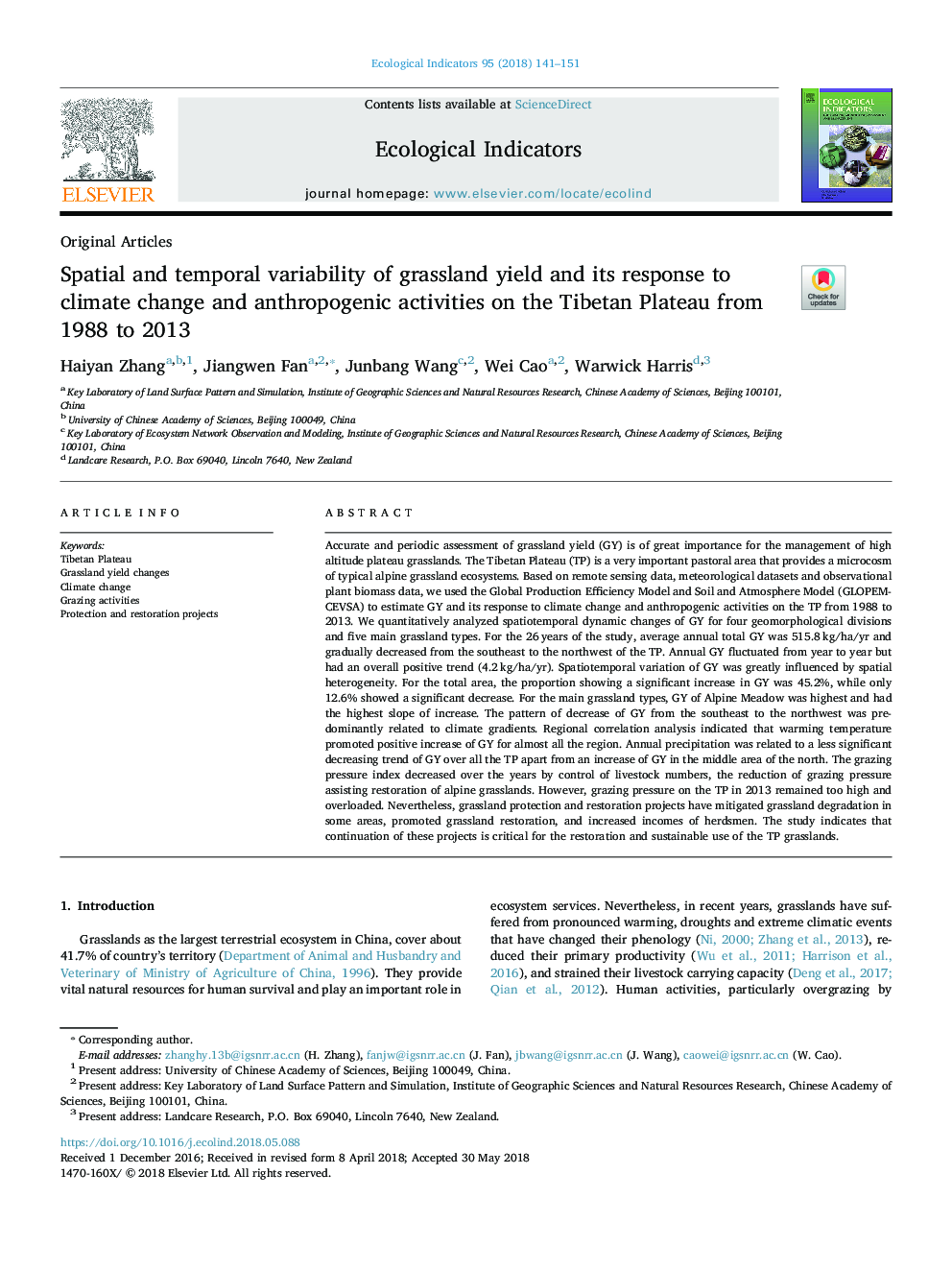| Article ID | Journal | Published Year | Pages | File Type |
|---|---|---|---|---|
| 8844929 | Ecological Indicators | 2018 | 11 Pages |
Abstract
Accurate and periodic assessment of grassland yield (GY) is of great importance for the management of high altitude plateau grasslands. The Tibetan Plateau (TP) is a very important pastoral area that provides a microcosm of typical alpine grassland ecosystems. Based on remote sensing data, meteorological datasets and observational plant biomass data, we used the Global Production Efficiency Model and Soil and Atmosphere Model (GLOPEM-CEVSA) to estimate GY and its response to climate change and anthropogenic activities on the TP from 1988 to 2013. We quantitatively analyzed spatiotemporal dynamic changes of GY for four geomorphological divisions and five main grassland types. For the 26â¯years of the study, average annual total GY was 515.8â¯kg/ha/yr and gradually decreased from the southeast to the northwest of the TP. Annual GY fluctuated from year to year but had an overall positive trend (4.2â¯kg/ha/yr). Spatiotemporal variation of GY was greatly influenced by spatial heterogeneity. For the total area, the proportion showing a significant increase in GY was 45.2%, while only 12.6% showed a significant decrease. For the main grassland types, GY of Alpine Meadow was highest and had the highest slope of increase. The pattern of decrease of GY from the southeast to the northwest was predominantly related to climate gradients. Regional correlation analysis indicated that warming temperature promoted positive increase of GY for almost all the region. Annual precipitation was related to a less significant decreasing trend of GY over all the TP apart from an increase of GY in the middle area of the north. The grazing pressure index decreased over the years by control of livestock numbers, the reduction of grazing pressure assisting restoration of alpine grasslands. However, grazing pressure on the TP in 2013 remained too high and overloaded. Nevertheless, grassland protection and restoration projects have mitigated grassland degradation in some areas, promoted grassland restoration, and increased incomes of herdsmen. The study indicates that continuation of these projects is critical for the restoration and sustainable use of the TP grasslands.
Keywords
Related Topics
Life Sciences
Agricultural and Biological Sciences
Ecology, Evolution, Behavior and Systematics
Authors
Haiyan Zhang, Jiangwen Fan, Junbang Wang, Wei Cao, Warwick Harris,
